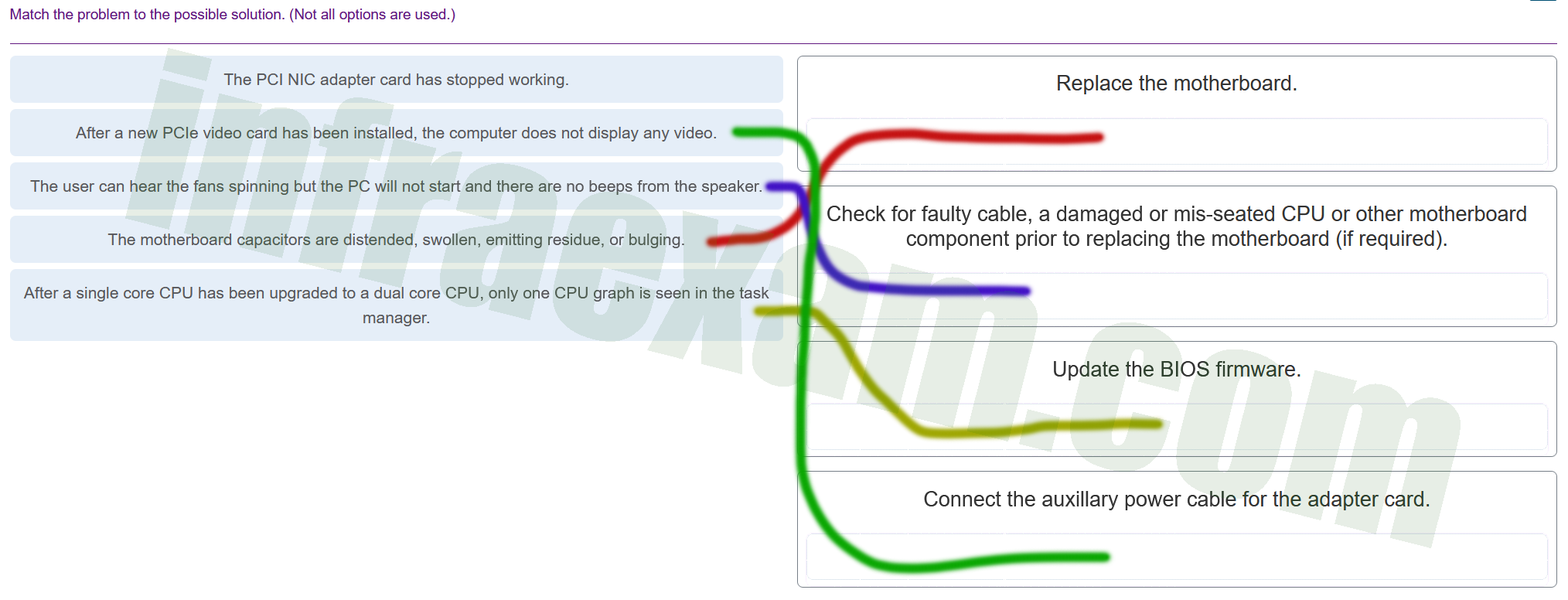Explanation & Hint:
- After a new PCIe video card has been installed, the computer does not display any video.
- Solution: Connect the auxiliary power cable for the adapter card. Many modern video cards require additional power directly from the power supply, and forgetting to connect this can result in no video output.
- The user can hear the fans spinning but the PC will not start, and there are no beeps from the speaker.
- Solution: Check for faulty cable, a damaged or mis-seated CPU, or other motherboard component prior to replacing the motherboard (if required). No beeps typically indicate a fundamental hardware issue that can be due to several factors including power, CPU, or motherboard problems.
- The motherboard capacitors are distended, swollen, emitting residue, or bulging.
- Solution: Replace the motherboard. Distended or bulging capacitors are a clear sign of hardware failure on the motherboard.
- After a single core CPU has been upgraded to a dual core CPU, only one CPU graph is seen in the task manager.
- Solution: Update the BIOS firmware. If the BIOS doesn’t recognize the new multi-core processor, an update may be necessary to ensure the motherboard can properly utilize the new CPU.
|

